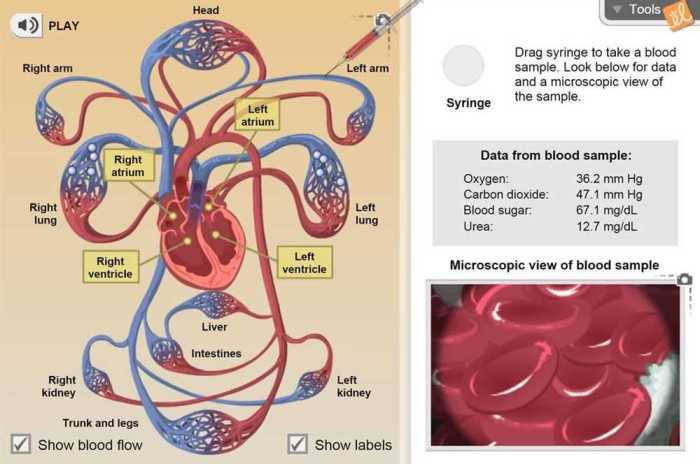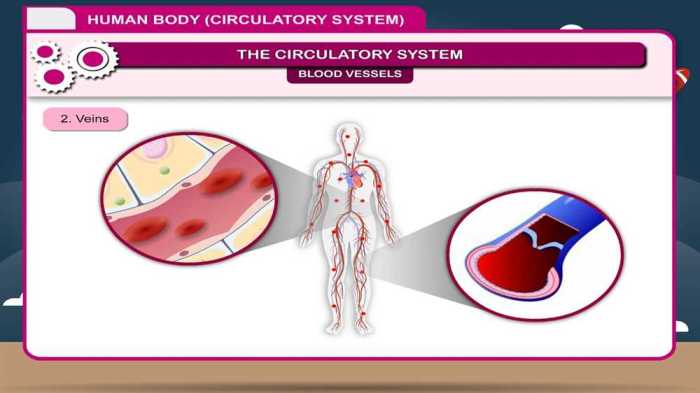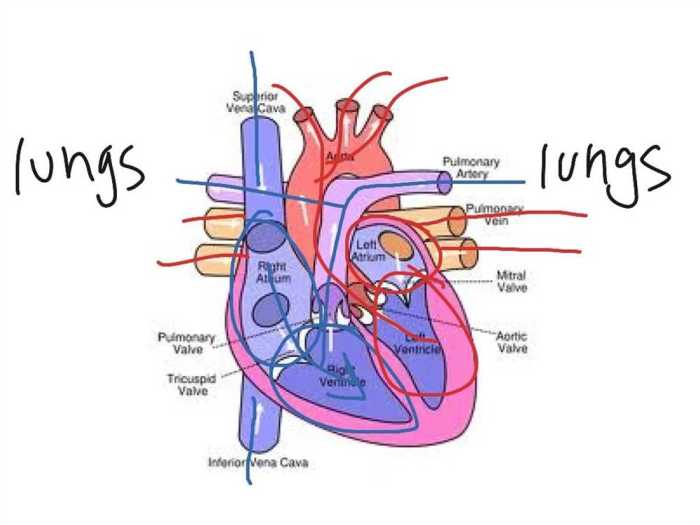Embark on an exploration of the human circulatory system with our comprehensive Gizmo Circulatory System Answer Key. This guide unlocks the intricacies of this vital system, providing a thorough understanding of its components, functions, and disorders.
From the heart’s intricate structure to the role of blood vessels in regulating blood flow, this resource delves into the fundamental principles that govern the circulatory system. Prepare to unravel the mysteries of this essential life-sustaining network.
1. Gizmo Circulatory System Overview

The circulatory system is a complex network of organs and vessels that transport blood throughout the body. Its primary function is to deliver oxygen and nutrients to cells and remove waste products.
The circulatory system consists of the heart, blood vessels, and blood. The heart pumps blood through the blood vessels, which carry it to all parts of the body. Blood vessels include arteries, veins, and capillaries.
The circulatory system plays a vital role in maintaining homeostasis by regulating body temperature, pH, and fluid balance.
Heart Structure and Function
The heart is a muscular organ located in the chest cavity. It consists of four chambers: two atria and two ventricles. The atria receive blood from the body and the ventricles pump blood out to the body.
The heart’s electrical conduction system regulates the heartbeat. The sinoatrial (SA) node initiates the heartbeat, and the atrioventricular (AV) node delays the signal to allow the atria to fill before the ventricles contract.
The cardiac cycle refers to the sequence of events that occur during a heartbeat, including atrial systole, ventricular systole, and diastole.
Blood Vessels: Types and Functions
Blood vessels are classified into three types: arteries, veins, and capillaries.
- Arteriescarry oxygenated blood away from the heart to the body.
- Veinscarry deoxygenated blood back to the heart from the body.
- Capillariesare the smallest blood vessels and allow for the exchange of oxygen, nutrients, and waste products between the blood and tissues.
Blood vessels regulate blood pressure and blood flow through vasoconstriction and vasodilation.
Blood Composition and Functions
Blood is composed of plasma, red blood cells, white blood cells, and platelets.
- Plasmais the liquid component of blood and contains proteins, hormones, and nutrients.
- Red blood cellscontain hemoglobin, which binds to oxygen and transports it throughout the body.
- White blood cellsdefend the body against infection.
- Plateletshelp to stop bleeding by forming clots.
Blood plays a crucial role in transporting oxygen, nutrients, hormones, and waste products.
Blood Pressure and Regulation
Blood pressure is the force exerted by blood on the walls of blood vessels. It is measured in millimeters of mercury (mm Hg).
Blood pressure is influenced by cardiac output (the volume of blood pumped by the heart per minute) and peripheral resistance (the resistance to blood flow in the blood vessels).
Blood pressure is regulated by baroreceptors, which are located in the carotid arteries and aortic arch. Baroreceptors detect changes in blood pressure and send signals to the brain, which adjusts cardiac output and peripheral resistance accordingly.
Cardiovascular Disorders, Gizmo circulatory system answer key
Cardiovascular disorders are a leading cause of death worldwide.
- Heart diseaserefers to a group of conditions that affect the heart and blood vessels, including coronary artery disease, heart attack, and stroke.
- Hypertensionis a condition characterized by high blood pressure.
- Strokeoccurs when blood flow to the brain is interrupted, either by a blood clot or a burst blood vessel.
Cardiovascular disorders can be prevented by managing risk factors such as high blood pressure, high cholesterol, smoking, and obesity.
FAQ Explained: Gizmo Circulatory System Answer Key
What is the function of the circulatory system?
The circulatory system transports oxygen, nutrients, hormones, and waste products throughout the body, maintaining homeostasis.
How many chambers does the heart have?
The heart has four chambers: two atria and two ventricles.
What is the difference between arteries and veins?
Arteries carry oxygenated blood away from the heart, while veins carry deoxygenated blood back to the heart.




